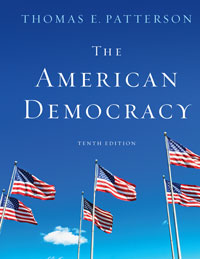| affirmative action | Refers to programs designed to ensure that women, minorities, and other traditionally disadvantaged groups have full and equal opportunities in employment, education, and other areas of life.
|
 |
 |
 |
| civil rights, or equal rights | The right of every person to equal protection under the laws and equal access to society’s opportunities and public facilities.
|
 |
 |
 |
| de facto discrimination | Discrimination on the basis of race, sex, religion, ethnicity, and the like that results from social, economic, and cultural biases and conditions.
|
 |
 |
 |
| de jure discrimination | Discrimination on the basis of race, sex, religion, ethnicity, and the like that results from a law.
|
 |
 |
 |
| equal-protection clause | A clause of the Fourteenth Amendment that forbids any state to deny equal protection of the laws to any individual within its jurisdiction.
|
 |
 |
 |
| reasonable-basis test | A test applied by courts to laws that treat individuals unequally. Such a law may be deemed constitutional if its purpose is held to be “reasonably” related to a legitimate government interest.
|
 |
 |
 |
| strict-scrutiny test | A test applied by courts to laws that attempt a racial or ethnic classification. In effect, the strict-scrutiny test eliminates race or ethnicity as a legal classification when it places minority-group members at a disadvantage.
|
 |
 |
 |
| suspect classifications | Legal classifications, such as race and national origin, that have invidious discrimination as their purpose and therefore are unconstitutional.
|





